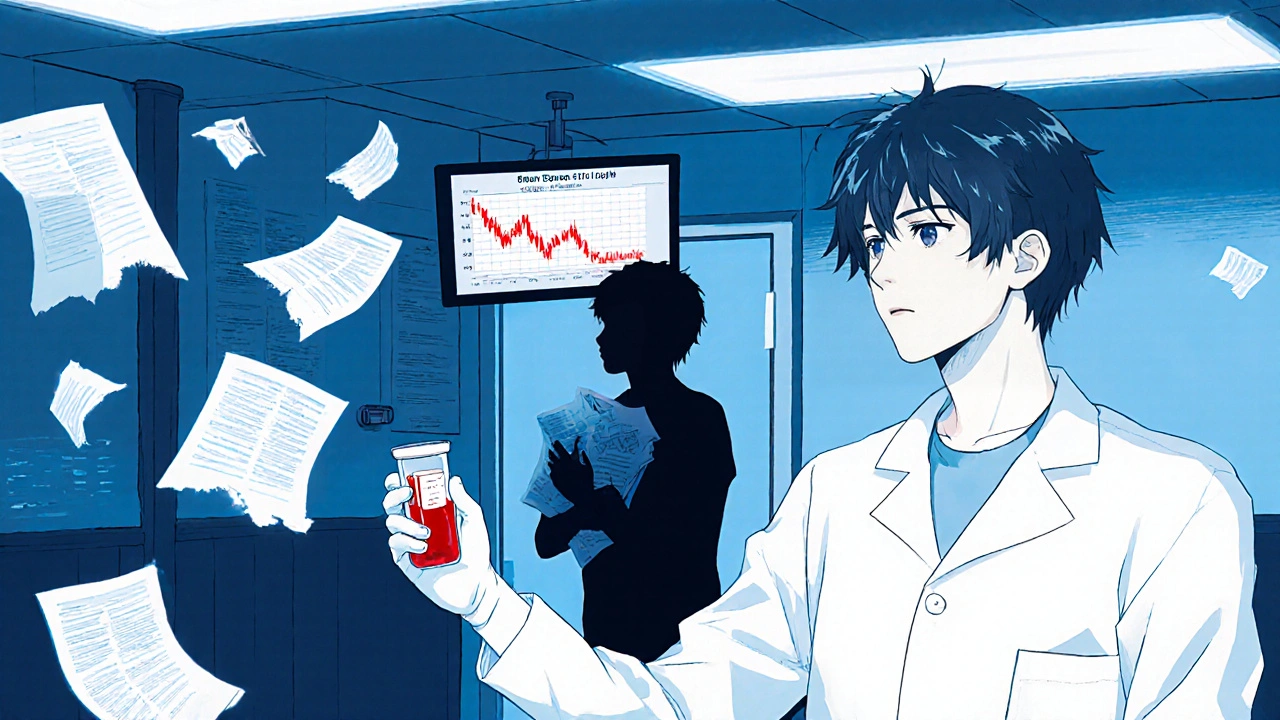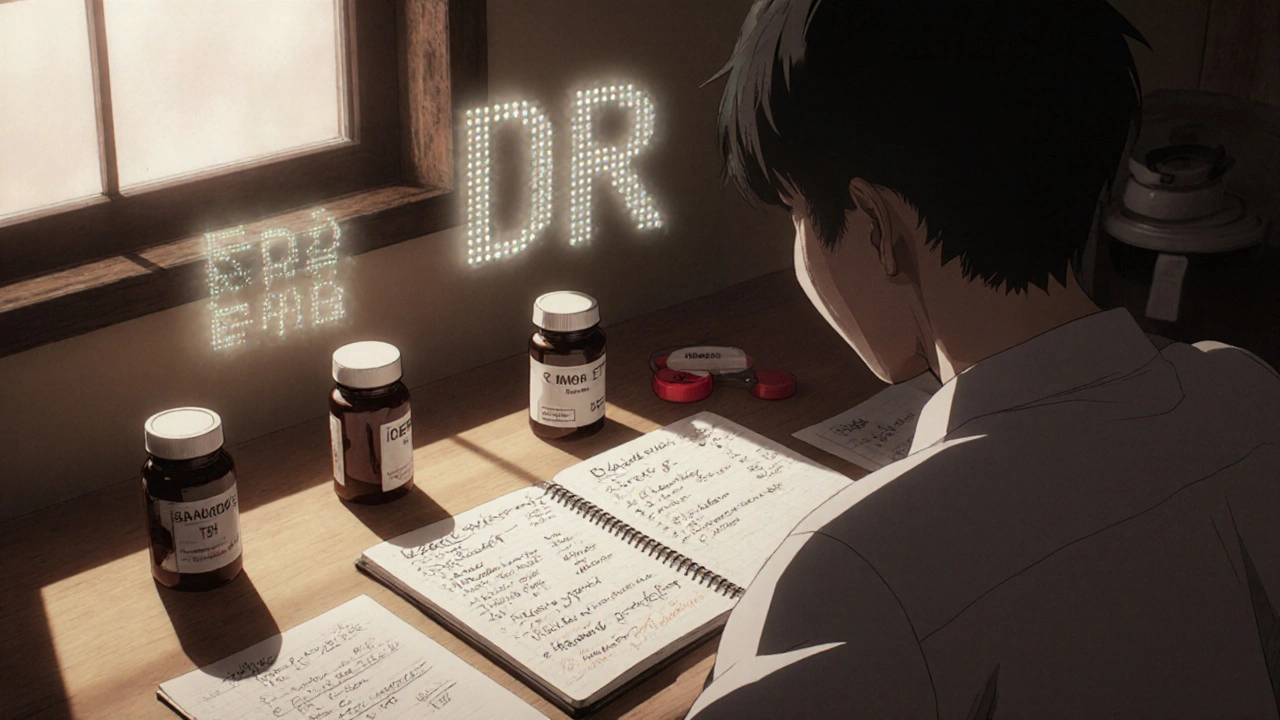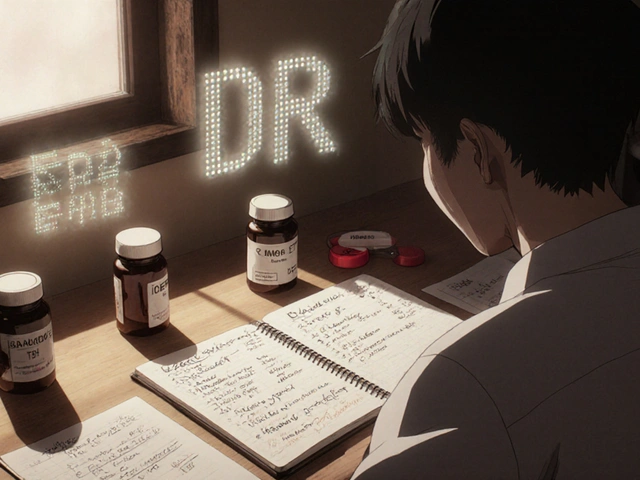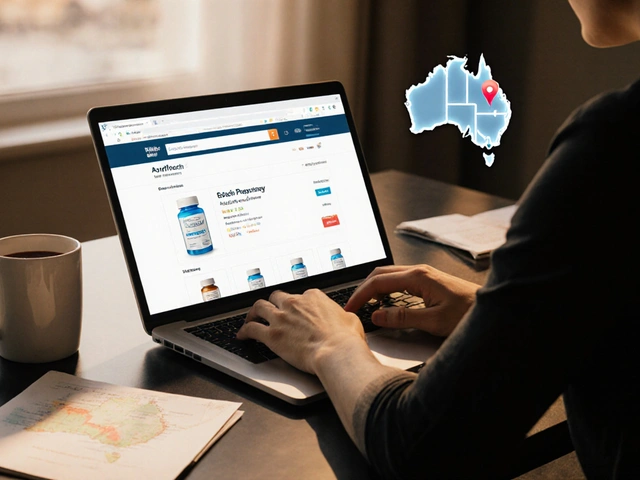Why Tracking Medication Effectiveness After a Generic Switch Matters
Switching from a brand-name drug to a generic is supposed to save money without sacrificing results. The FDA says generics are bioequivalent - meaning they deliver the same active ingredient at the same rate and amount as the brand. But in real life, that’s not always enough. Patients report feeling different after the switch. Some have breakthrough seizures. Others feel dizzy, fatigued, or notice their blood pressure or thyroid levels going off track. And in some cases, they just stop taking the medicine altogether.
Here’s the hard truth: even if a generic meets FDA standards, it can still cause problems - especially for drugs with a narrow therapeutic index. These are medications where the difference between a helpful dose and a dangerous one is tiny. Think warfarin, levothyroxine, digoxin, and antiepileptics. For these, small changes in how the drug is absorbed can mean big changes in how you feel.
Tracking isn’t optional. It’s the only way to catch problems early. And if you’re switching to a generic, you need a plan - not just hope.
Know Which Drugs Need Extra Attention
Not all generics are created equal. Most work fine. But for certain drugs, even tiny differences in fillers, coatings, or how quickly the pill breaks down can matter.
High-risk categories include:
- Narrow therapeutic index (NTI) drugs: Warfarin (blood thinner), levothyroxine (thyroid), digoxin (heart), phenytoin and carbamazepine (seizure meds), lithium (mood stabilizer). These require lab monitoring before and after the switch.
- Psychiatric medications: Antidepressants and antipsychotics. Patients often report mood shifts, anxiety, or sleep changes after switching - even if labs look normal.
- Inhalers and topical products: These are complex generics. The FDA flags many as having potential bioequivalence issues (rated BX in the Orange Book).
Check the FDA Orange Book. Look for the therapeutic equivalence code. If it’s AB, it’s considered interchangeable. If it’s BX, proceed with caution. Only 1.7% of generics carry this warning - but they’re the ones that need your attention.
Use These Four Tracking Methods
Don’t rely on gut feeling. Use real data to judge if the switch worked.
- Lab values: For NTI drugs, get baseline labs before the switch. Then retest at 2 weeks, 6 weeks, and 90 days. For warfarin, watch INR. For levothyroxine, check TSH. A change of more than 15% from baseline is a red flag. One study found 23.4% of patients on generic levothyroxine had TSH levels outside the target range within 6 months.
- Healthcare utilization: Track hospital visits, ER trips, and urgent care use. After switching to generic antiepileptics, patients had 12.3% more ER visits than those who stayed on brand. If you’re going to the ER more often, something’s wrong.
- Medication gaps: If you stop taking your new generic for 90 days or more, that’s a strong signal the drug isn’t working - or it’s causing side effects. One study showed switchers were 18.7% more likely to have a supply gap than those who stayed on brand or authorized generics.
- Patient-reported symptoms: Keep a simple journal. Note mood, energy, sleep, seizures, dizziness, nausea. Did your symptoms get worse after the switch? Did you start skipping doses? This isn’t just "feeling" - it’s clinical data.

Follow a Proven Monitoring Timeline
There’s no one-size-fits-all schedule, but here’s what works in practice:
- Days 1-7: Pharmacist or nurse calls you. Ask: "How are you feeling? Any new side effects?" This is when most people notice changes.
- Days 8-30: For NTI drugs, get lab work. For others, check in with your doctor. If you’re on levothyroxine or warfarin, labs should be done by day 30.
- Day 90: Full clinical review. Compare lab results, symptom journal, and usage patterns. If everything’s stable, you can switch to routine monitoring. If not, consider switching back.
Programs like Kaiser Permanente’s reduced adverse events by 42% by using this exact schedule: automated call at day 7, nurse callback at day 30, doctor visit at day 90.
Ask the Right Questions
Don’t assume your pharmacist or doctor is tracking this for you. Be proactive.
- "Was this switch necessary?" Some switches are automatic. You may not have been asked. You have the right to refuse.
- "Is this drug on the FDA’s BX list?" If yes, ask if you can stay on the brand or use an authorized generic.
- "What should I watch for?" Get specific symptoms to monitor - not just "let me know if something’s wrong."
- "Will you check my labs after the switch?" Don’t wait for them to call. Schedule the test.
Only 12.4% of primary care doctors routinely document why they didn’t switch a patient to generic. That means you’re likely the only one paying attention.

What to Do If the Generic Isn’t Working
If you notice problems - worsening symptoms, abnormal labs, or you stopped taking the drug - don’t wait. Act.
- Call your doctor. Don’t just say "it’s not working." Say: "My TSH went from 2.1 to 6.8 after switching. I’ve had fatigue and weight gain. I think I need to go back to the brand."
- Request a prior authorization. Insurance often covers the brand if you prove the generic failed. Use your lab results and symptom log as evidence.
- Ask about authorized generics. These are made by the brand company and are identical to the brand - just sold under a generic label. They’re often cheaper than the brand and more reliable than third-party generics.
- Consider switching back. A 2018 study found 87% of patients with breakthrough seizures after generic substitution improved when switched back to brand.
Technology Is Helping - But You Still Need to Be Involved
Some hospitals now use AI tools to flag patients at risk. Epic’s system alerts doctors if lab values shift more than 15% within 90 days of a switch. The FDA’s new Sentinel Network connects 24 EHR systems to track real-world outcomes.
But these tools aren’t everywhere. And even when they exist, they don’t replace you.
The most effective tracking still comes down to three things: knowing your baseline, watching for changes, and speaking up. The system is built to save money. You’re the one who has to make sure it doesn’t cost you your health.
Bottom Line: You’re the Best Tracker
Generic drugs are safe for most people. But for those on critical medications, the difference between success and failure can be subtle - and dangerous.
You don’t need to be a doctor to track effectiveness. You just need to know your body, know your meds, and be willing to ask questions. Keep a log. Get your labs done. Call your pharmacist. Don’t assume everything’s fine because the label says "generic."
The goal isn’t to avoid generics. It’s to make sure they work for you.








King Over November 21, 2025
I switched my levothyroxine last year and didn't think twice. Turned out my TSH went from 2.5 to 7.1. I felt like a zombie for months. Now I only take the brand. No regrets.
Ravinder Singh November 21, 2025
Man, this is gold. I'm a pharmacist in rural India and we see this all the time. People think generic = same. But for warfarin or lithium? Nah. I always tell 'em: check your labs, keep a journal, and don't be shy to ask for the brand if you feel off. Your body knows before the lab does.
Johannah Lavin November 22, 2025
I'm so glad someone finally said this 🙏 I was on generic carbamazepine and had 3 seizures in 3 weeks. My doctor said "it's the same thing" but my brain said otherwise. I begged for the brand back. It took 6 months of paperwork but I got it. I'm seizure-free now. Don't let them gaslight you.
Russ Bergeman November 23, 2025
Wait, so you're saying the FDA is lying? Because I thought they tested these things. Also, why are you so obsessed with labs? I just take my pill and live my life.
Michael Fessler November 24, 2025
I've been tracking NTI meds for 12 years. The 15% lab shift threshold? Spot on. One patient on generic warfarin had an INR spike from 2.4 to 4.8 in 10 days. No symptoms until she almost bled out. That's why I always push for pre- and post-switch labs. It's not paranoia-it's pharmacokinetics. And yes, the fillers matter. The coating on the generic was delaying absorption. Small difference. Big consequence.
Katie Magnus November 24, 2025
Oh please. This is just Big Pharma fearmongering. Generics are cheaper because they don't have billion-dollar ad campaigns. If you feel weird, maybe you're just anxious. Or maybe you're addicted to the brand name placebo. I've been on generics for 20 years. Never had an issue.
Alyssa Torres November 26, 2025
I work in a clinic and we had a woman come in crying because she couldn't sleep after switching to generic sertraline. Labs were normal. But her journal said: "I feel numb. Like I'm watching my life through glass." We switched her back. Two weeks later she said, "I cried at a commercial for the first time in 6 months." That's not a lab result. That's a soul coming back.
Destiny Annamaria November 26, 2025
I'm from the Bronx and my grandma took generic levothyroxine and started forgetting her own name. We switched back to Synthroid. She started remembering birthdays again. I don't care what the FDA says. If your grandma forgets who you are, the generic isn't working. Period.
Nosipho Mbambo November 28, 2025
I read this... but honestly? I'm too lazy to track anything. I just take the pill. If I feel weird, I stop. Then I feel better. So... problem solved? Maybe I'm just bad at this.
Ron and Gill Day November 28, 2025
This whole post is a scam. The FDA doesn't care about you. They care about profits. If you're not on an authorized generic, you're being exploited. And if your doctor didn't warn you? They're complicit. You're not just a patient-you're a victim of the system.
Jeremy Samuel November 28, 2025
Generic is generic. I got my carbamazepine from a guy on the internet. It was cheaper and worked fine. Why overthink it? Maybe you're just overreacting.
Dana Oralkhan November 30, 2025
I used to be skeptical too. Then my mom had a stroke after switching to generic warfarin. Her INR was off by 40%. She didn't know until it was too late. I started tracking everything. Labs. Symptoms. Pills taken. Now I help other people do it too. It's not about distrust. It's about safety. You owe it to yourself to be your own advocate.
Summer Joy November 30, 2025
I switched to generic levothyroxine and my hair started falling out. Then I got depressed. Then I cried for 3 hours straight because I couldn't remember my dog's name. I went back to brand. All of it stopped. I'm not exaggerating. This isn't anxiety. This is real. Why is no one talking about this? 🥺
daniel lopez December 1, 2025
This is all part of the Great Generic Conspiracy. The FDA, Big Pharma, and your doctor are all in on it. They want you dependent on cheap pills so they can control your mind. That's why they don't tell you about the fillers-because they're laced with microchips. I checked the pill under UV light. It glowed. I'm not crazy. I'm awake.
Aruna Urban Planner December 2, 2025
There's a deeper truth here. The system is designed to optimize cost, not care. We've forgotten that medicine is relational-not transactional. A pill is not a solution. A relationship with your body, your data, and your provider is. Tracking isn't about fear. It's about reclaiming agency in a world that wants you passive. One journal entry at a time.